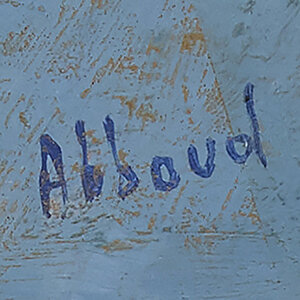


Last updated on Sat 22 September, 2018


Millennia of Creativity
NABU Museum
22 September 2018
The NABU Museum will open its doors to the public for the first time with an exhibition entitled Millennia of Creativity. This exhibition will be presenting exceptional pieces of the archeological collection of the museum all the while drawing parallels with modern and contemporary art.
Opening on September 22 2018 at 6 pm under the patronage of Mr. Saad Hariri
On the coast of the Mediterranean in North Lebanon at Ras ach-Chaq’a or Theoprosopon of classical times, in the village of El Heri, stands the NabuMuseum. Named after the Mesopotamian patron god of literacy, the museum offers an exceptional permanent collection of early Bronze and Iron Age artifacts, antiquities from the Roman, Greek, Byzantine, Phoenician and Mesopotamian epochs, rare manuscripts and ethnographic material. The museum’s collection also includes examples of local and regional modern and contemporary art by key artists such asAmin al-Bacha, Adam Henein, Dia Azzawi, Helen Khal, Omar Onsi, Mustapha Farroukh, Ismail Fattah, Khalil Gibran, Paul Guiragossian, Ahmad Moualla, Shafic Abboud, Rafic Charaf, Mustafa Ali, Shakir Hassan al-Said. In addition, there is an exceptional collection of works by Saliba Douaihy. covering all phases from the early 1930s until his death in 1994. Notable in the Nabu’s collection is a unique selection of Cuneiform tablets and Phoenician stelae dating from 2330 to 540 B.C.E that recount epic tales, give indications of other economic systems, information on ethnic groups and maps of ancient cities. The museum also holds an extensive collection of 19thand early 20thcentury photographs and postcards. The library houses books on art, archaeology, history, geography, and a collection of rare manuscripts.In a region of seemingly constant turmoil and strife, Nabu Museum is a space for art and an institution for preserving and enhancing culture reaching out to communities through educational programs, organized tours, public lectures and guided exhibitions. We aim to produce and encourage art practices in the region and to reflect on our contemporary realities. By providing a platform for encounter and cultural exchange and by supporting local art production we hope to challenge various audiences in new and unexpected ways.
The arts of bronze, glass and ceramics, are largely represented. Amongst many master pieces is an elegant votive roman statuette representing Venus, ornamented with golden bracelets, an exceptional roman glass blown carafe in shape of grapes, as well as rare terracotta votive Phoenician statues. Stone artifacts also make up a big part of the collection. There is a notable collection of eye idols as well as funerary stelae from the Sour, Palmyra and the Arabic peninsula, most notably a spectacular low relief funerary bust of Palmyran provenance. Stimulating and didactic confrontations between art of the past and recent creations, in the aim of highlighting that behind the imperative for rupture, which is the foundation of contemporary art, a thread connects all forms of creation. Hence, artists like Ismail Fattah, Shaker Hassan Al Said and Dia Azzawi are pioneers of the modern Iraqi movement, have filled the gap between modernity and cultural heritage establishing a new aesthetic language for Arab art. An example of a work shedding light of this connection is the work of Dia Azzawi, inspired by the epic of Gilgamesh, representing “Ashtar’, goddess symbolizing the female gender, of love and war like that of Eros and Thanatos.
Join us in our endless discovery of modern and contemporary Arab art